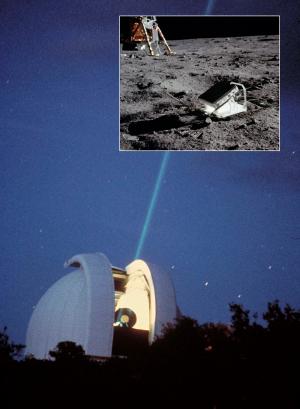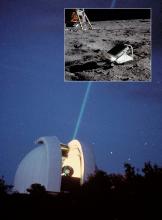Lunar Laser [1]
Apollo 11 was coasting toward the Moon 50 years ago this month when Mission Control passed along a request.
CAPCOM: Roger, Apollo 11. We got a laser. It’s a blue-green laser that we’re going to flash on and off. It’s coming out of McDonald Observatory. Would you please take a look through the telescope and see if you can see it? Over. ... APOLLO 11: Okay, Houston, neither Neil nor Mike could see it.
Although the astronauts didn’t see the laser, a special reflector they set up on the Moon did. The McDonald Observatory laser first found it a few weeks after the astronauts left the Moon. And the observatory continued to ping the reflector for more than four decades.
Today, other observatories are carrying on with that work. They’re using five reflectors, left by American and Soviet missions. Scientists time how long it takes a laser beam to hit a reflector and bounce back to Earth. That reveals the Earth-Moon distance to within about a millimeter.
From those observations, scientists have found that the Moon is moving away from Earth at about an inch and a half per year. By measuring “wobbles” in the Moon’s motion, they’ve discovered that the Moon has a molten outer core. And by measuring how Earth and the Moon “fall” toward the Sun, they’ve confirmed Albert Einstein’s theory of gravity to a high degree of precision.
The laser experiment continues today — the last working experiment from Apollo.
More about Apollo science tomorrow.
Script by Damond Benningfield
Keywords:
- Apollo Project [3]
- Earth's Moon [4]
- Lunar Exploration [5]
- McDonald Observatory [6]
- Space Technology [7]


